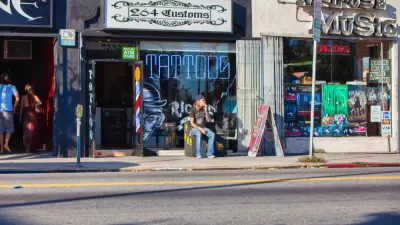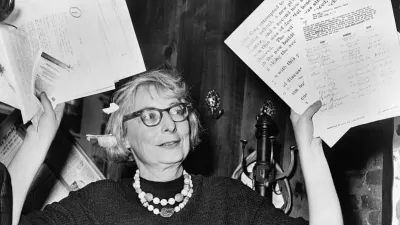Roberta Brandes Gratz writes that "When we talk about strategies for city growth and economic development, women aren't often offered seats at the table." Jacobs was the exception, and represented a challenge to male-dominated planning.
Gratz had multiple conversations with Jacobs while conducting research for her book The Battle for Gotham: New York in the Shadow of Robert Moses and Jane Jacobs. Gratz says she often talked about the difference between men and women's thinking about planning:
"Pondering why men and women's voices were heard differently on the subject of city building, she noted matter-of-factly that women think about things close to home-street, neighborhood and community. They more easily recognize the big difference small things can make. Men think big, national and global. They are top-down oriented."
Gratz says that Jacobs "...didn't for one moment think that what she had to say was heard with the same impact as it would have been if her words were spoken by men."
FULL STORY: Jane Jacobs and the Power of Women Planners

Planetizen Federal Action Tracker
A weekly monitor of how Trump’s orders and actions are impacting planners and planning in America.

Restaurant Patios Were a Pandemic Win — Why Were They so Hard to Keep?
Social distancing requirements and changes in travel patterns prompted cities to pilot new uses for street and sidewalk space. Then it got complicated.

Maui's Vacation Rental Debate Turns Ugly
Verbal attacks, misinformation campaigns and fistfights plague a high-stakes debate to convert thousands of vacation rentals into long-term housing.

In California Battle of Housing vs. Environment, Housing Just Won
A new state law significantly limits the power of CEQA, an environmental review law that served as a powerful tool for blocking new development.

Boulder Eliminates Parking Minimums Citywide
Officials estimate the cost of building a single underground parking space at up to $100,000.

Orange County, Florida Adopts Largest US “Sprawl Repair” Code
The ‘Orange Code’ seeks to rectify decades of sprawl-inducing, car-oriented development.
Urban Design for Planners 1: Software Tools
This six-course series explores essential urban design concepts using open source software and equips planners with the tools they need to participate fully in the urban design process.
Planning for Universal Design
Learn the tools for implementing Universal Design in planning regulations.
Heyer Gruel & Associates PA
JM Goldson LLC
Custer County Colorado
City of Camden Redevelopment Agency
City of Astoria
Transportation Research & Education Center (TREC) at Portland State University
Camden Redevelopment Agency
City of Claremont
Municipality of Princeton (NJ)





























